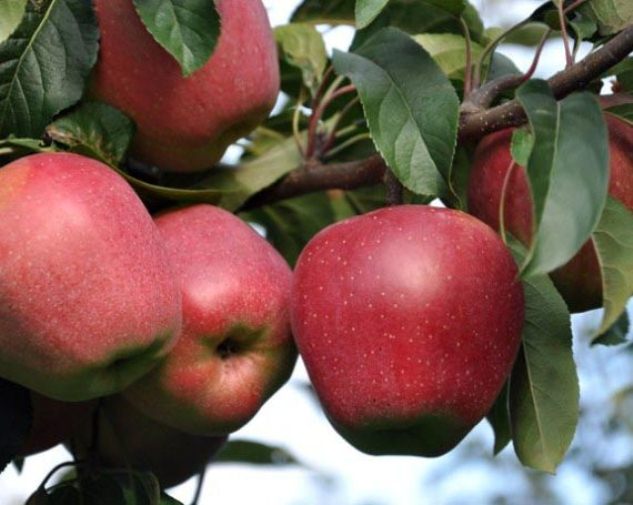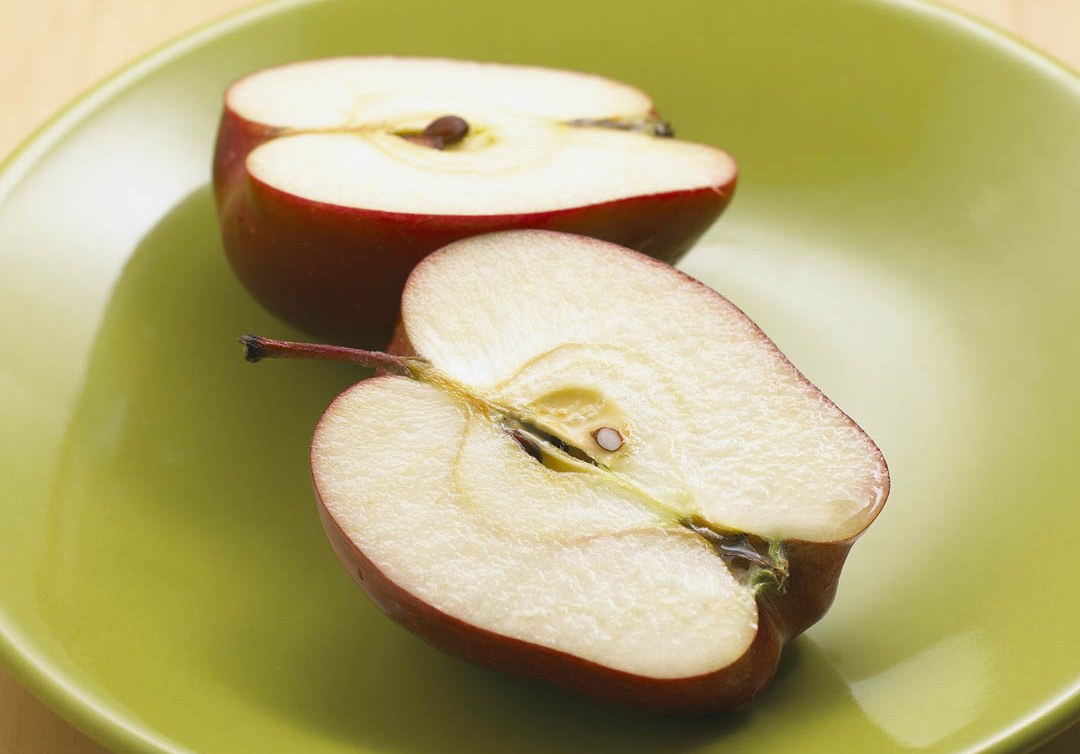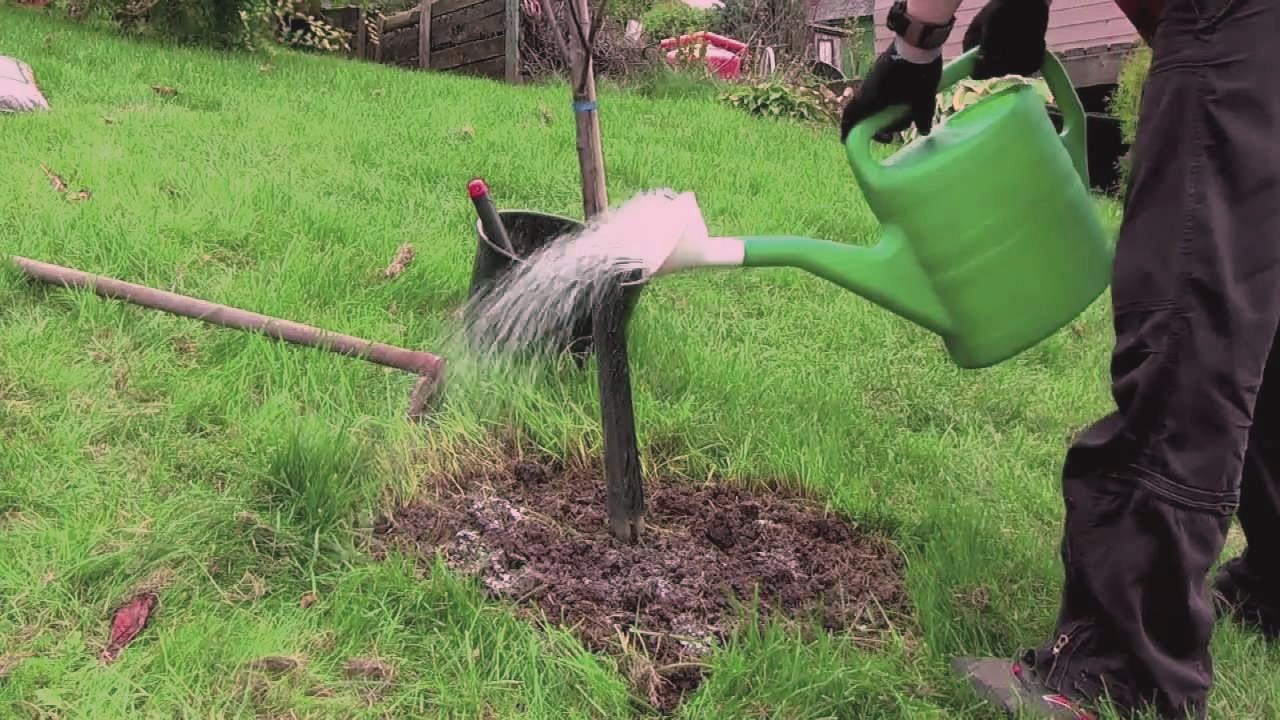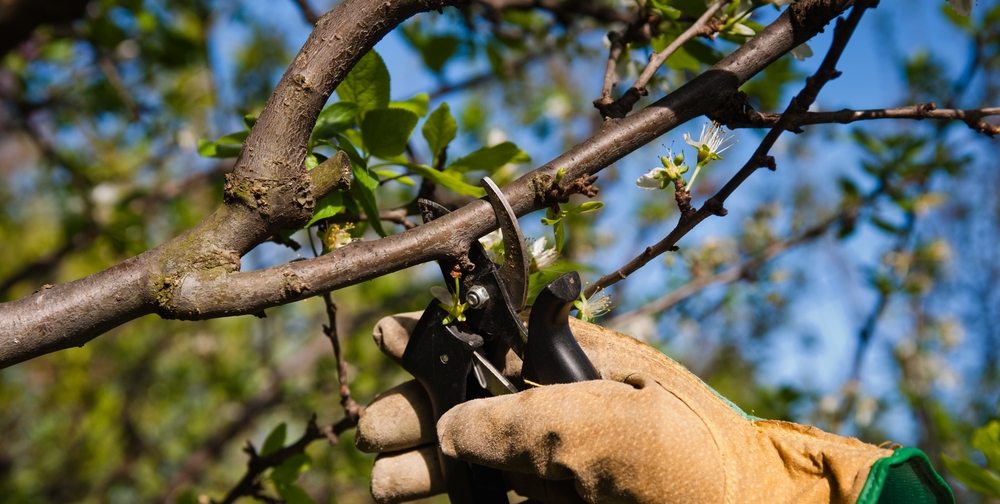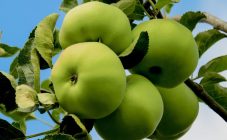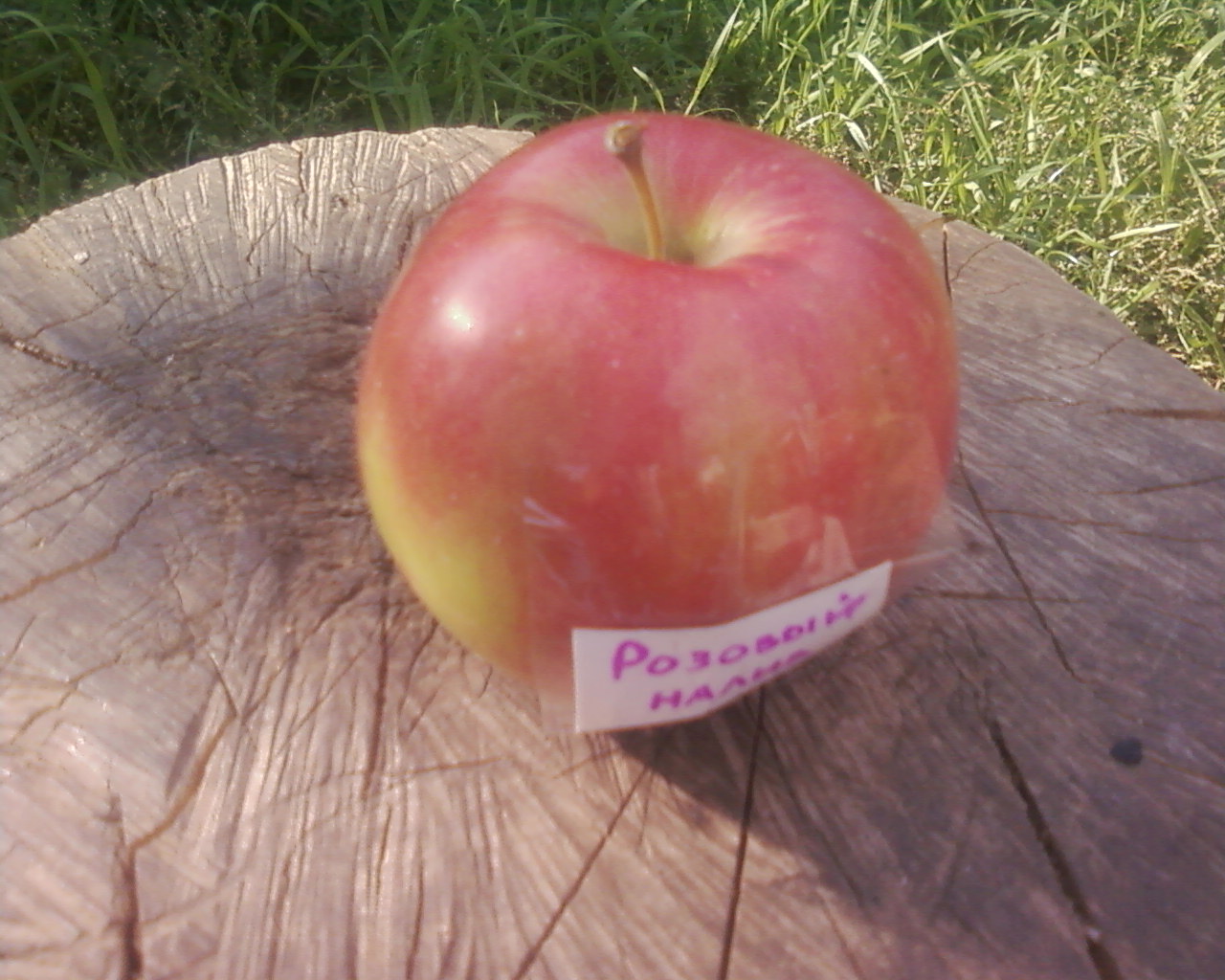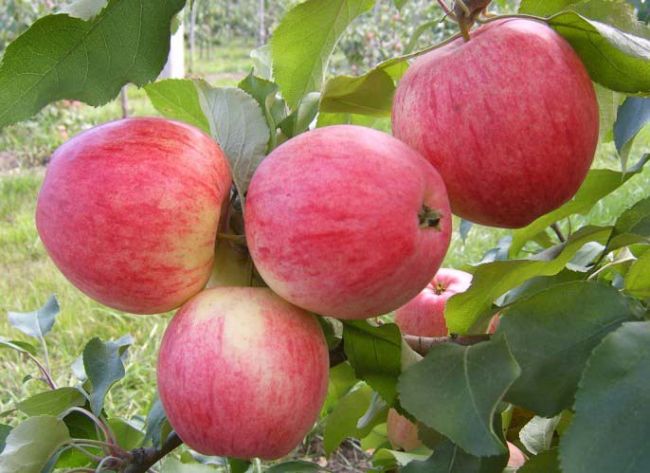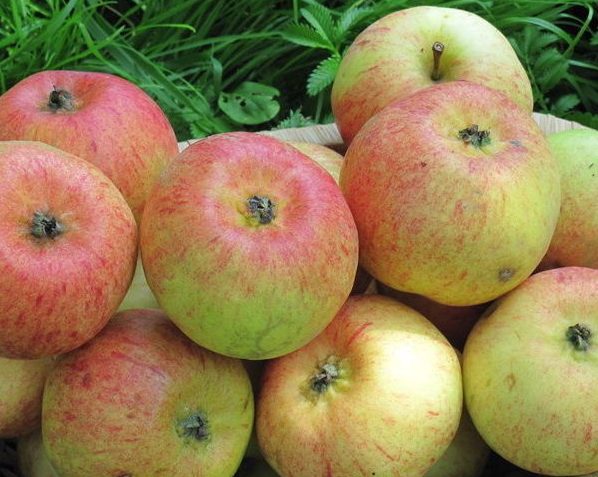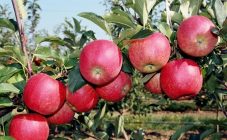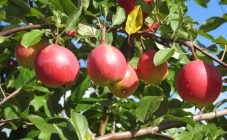Content:
The Gloucester apple tree is the most popular European fruit crop. The variety is of German origin, was bred in Germany in 1951. It was obtained by crossing the varieties Richard Delicious and Glockenapfel. Gloucester apples have combined the best qualities of their "progenitors". This variety is grown in different climatic regions.
Characteristics of the Gloucester apple tree
The tree is vigorous, fast-growing, with a pyramidal or oval medium-thickened crown, which acquires a rounded shape with age. Skeletal branches at the point of origin from the trunk form an angle of 45-55 degrees, the tops of the branches are directed upwards. The type of fruiting is mixed - the fruits are tied on spears, ringlets, fruit bags, fruit twigs. Flowering begins at the end of May, inflorescences consist of three to four buds. With self-pollination, the yield is no more than 18% of flowering.
The Gloucester variety belongs to the category of winter hardy apple trees, but Russian gardeners are afraid to plant the Gloucester variety of juicy apples in the middle lane, as they freeze slightly.
This is a high yielding variety. The crop is harvested constantly, with each subsequent season the yield increases. This variety reaches its peak fruiting in the tenth year, then up to 80 kg of ripe apples are harvested from the tree. You can increase the yield if you plant pollinators next to it: Gala, Spartan, Jonathan, Idared. They have medium scab resistance.
Description of Gloucester apples
Gloucester apples are large, reaching a mass of 200 grams. The fruit is shaped like a round heart. Ripe fruits are dark red or crimson-red with many yellow dots. The skin is thin, smooth, dense. The pulp has a sweet and sour taste, juicy and velvety.
Apples contain a number of trace elements and vitamins:
- Vitamin C, which is important for the restoration and growth of gum tissue, blood vessels, and bones. Stimulates the nervous, circulatory and endocrine systems. With its insufficiency, scurvy develops.
- Vitamin E is a powerful antioxidant that removes toxins from the body. Participates in the production of hormones, has a positive effect on the human reproductive system.
- Macro and microelements - ferrum, sodium, magnesium. Ferrum is part of hemoglobin, a substance that carries oxygen in the human body. It is recommended to eat apples for iron deficiency anemia. Magnesium and sodium are involved in the regulation of cardiac activity.
- Pectin is a complex carbohydrate that acts as a thickener and stabilizer for apples. Apples also contain organic acids, saturated and unsaturated fatty acids.
- Apples are low in calories, so they can be eaten during the period of weight loss.
Landing
First you need to decide whether a tall or undersized tree should be. Dwarf rootstocks yield more yields than tall and medium-sized trees. You need to start choosing a seedling with all seriousness. The seedling should be no more than 2 years old. Before buying, thoroughly inspect the trunk and roots for deformations, layers and signs of decay. For the best survival and prevention of diseases, the seedling must be placed in a growth biostimulator with the addition of a fungicide for a couple of hours.
Dig a seedling hole at least 60 centimeters deep with a diameter of more than one meter.Mix the soil with organic fertilizers, when planting, cover the seedling with soil so that 2 cm of the root collar remains on the surface.
It is important to choose a good landing site. It should be sunny and inaccessible to the north wind, you also need to take into account that the Gloucester apple tree can reach a height of two meters, and in the diameter of the crown - three meters. Loamy and sandy loam soil is most suitable for this apple tree. If the soil is dense, you need to loosen it and add compost or humus. In autumn, it is necessary to plant seedlings a month before frost, and in spring - in warm soil and with closed buds.
Care
Care includes timely watering, feeding, pruning and chemical treatment from diseases and pests. Proper watering is the main guarantee for the survival and growth of the apple tree. It needs to be done in four steps:
- The first stage is before bud break.
- The second is three weeks after the tree finishes blooming.
- The third time is irrigated two weeks before harvest.
- The last watering is at the end of September, in order to prevent the tree from freezing in dry autumn.
For good growth of the tree, the generally accepted calculation of water consumption per plant should be followed. Saplings up to two years old - 35 liters of water, 3-5 years old - 85 liters, 5.5 - 10 year old trees - from 130 to 150 liters.
You need to start feeding the tree from the next year after planting. In the spring, the first fertilizer is poured when young leaves appear. Plants are in the stage of active growth, so they need to be fed with nitrogen fertilizers. Use the combination: 500 gr. Urea or ammonium nitrate + nitroammophos 5 g.
The next top dressing is done during flowering. Mix 300 g of urea with 100 g of superphosphate and 70 g of potassium sulfate, mixing half a bucket of manure into this mixture. 3-4 buckets of such a mixture for each tree.
During the ripening period of the fruit - 50 g of nitrophos and 1 g of sodium humate are diluted in 10 liters of water. In the summertime, it is better to apply top dressing by the foliar method. Diluted nitrogen, phosphorus and potassium are sprayed over the entire crown in the evening or morning every two weeks. In winter, special complex fertilizers are used for feeding, which are applied to the root area.
How to prune
Gloucester apple pruning is done annually. Remove old, dry and non-viable branches. Timely pruning helps increase yields and prevents disease and pest attacks.
In the structure of the seedling, the main trunk and side branches are distinguished, all branches that claim to be the main trunk are removed. The division of the trunk into tiers is also accepted, the height of the trunk between them:
- From the first to the second tier, the height is 70-80 cm, on the 1st tier there are five branches, on the 2nd tier there are three - four.
- From the second to the third 35-40 cm, on the 3rd tier there are three branches.
In the second year, to stimulate the growth of lateral shoots, the vertical stem is pruned.
Apple tree treatment for diseases and pests
Preventive treatment is carried out in early spring, using a 3% solution of Bordeaux liquid. After the bud appears and flowering begins, the tree is sprayed with a 0.5% solution of oxychloride and 1% solution of Bordeaux mixture. To prevent infection with the scab fungus, it is necessary to begin prophylaxis in the fall in order to exclude the survival of the fungus in the ground. You need to start by removing unnecessary plant debris from the near-trunk area. Then you need to collect the leaf blades and burn outside the yard. Peel off the exfoliated bark, treat the place of cleaning with copper sulfate. The best prevention would be to plant varieties biologically resistant to scab on the site, for example, a winter variety called Pepin Saffron.If scab foci are found, immediately apply the fungicides approved for this season.
Collection and storage of apples
For those who like to eat apples in winter, this variety is the most suitable. Apples have a bright sweet and sour taste and contain many useful substances, such as vitamins B, C, E, iron, sodium magnesium, low-calorie pectin. The advantage of the variety is undoubtedly its yield. The Gloucester apple variety is suitable for cultivation in the southern regions of Russia. With proper care, the tree will yield a large harvest of excellent apples that can be enjoyed throughout the winter.
